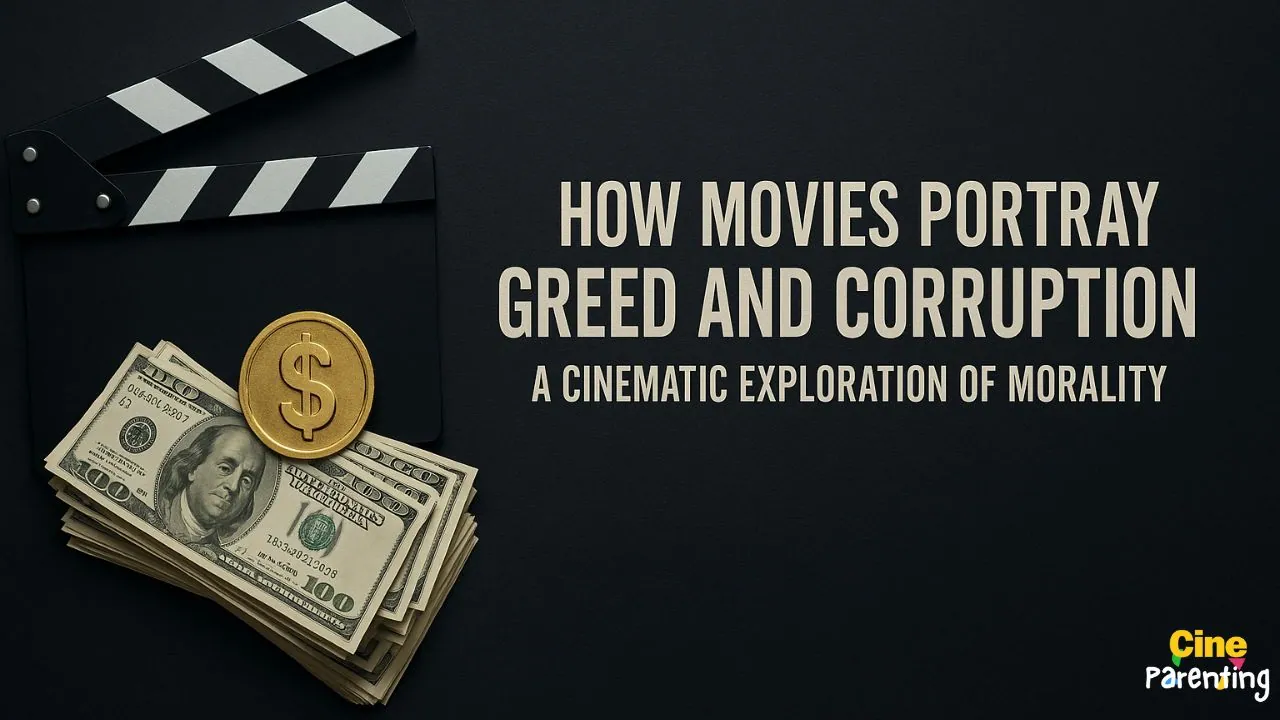Greed and corruption are timeless themes that have captivated filmmakers and audiences alike, offering a lens into the darker sides of human nature. From Wall Street’s high-stakes trading floors to political conspiracies, movies often use these themes to explore morality, power, and the consequences of unchecked ambition.
Why Greed and Corruption Are Central to Cinema
Greed and corruption make for compelling narratives because they tap into universal human struggles—temptation, moral compromise, and the pursuit of power. These themes resonate with audiences, reflecting real-world issues like corporate scandals, political corruption, and financial crises. By dramatizing these concepts, movies entertain while prompting viewers to reflect on ethics and societal values.
Iconic Films That Showcase Greed and Corruption
Wall Street (1987)
- Director: Oliver Stone
- Portrayal: Gordon Gekko (Michael Douglas) embodies corporate greed with his infamous “Greed is good” speech, mentoring young broker Bud Fox (Charlie Sheen) into insider trading and betrayal.
- Cinematic Technique: The film uses stark contrasts between wealth (Gekko’s lavish lifestyle) and morality (Fox’s working-class roots) to highlight the seductive yet destructive nature of greed.
- Lesson: Unchecked ambition leads to personal and professional ruin.
The Wolf of Wall Street (2013)
- Director: Martin Scorsese
- Portrayal: Jordan Belfort (Leonardo DiCaprio) rises to wealth through stock market manipulation and fraud, indulging in excess while defrauding investors.
- Cinematic Technique: Scorsese uses a frenetic pace, vibrant visuals, and dark humor to glorify Belfort’s lifestyle before showing its inevitable collapse, emphasizing the hollowness of greed-driven success.
- Lesson: Greed may bring temporary riches but leads to legal and moral consequences.
The Big Short (2015)
- Director: Adam McKay
- Portrayal: The film exposes the greed and corruption behind the 2008 financial crisis, showing how bankers and investors profited by betting on the housing market’s collapse.
- Cinematic Technique: McKay uses humor, fourth-wall breaks, and simplified explanations of financial jargon to make the systemic corruption accessible and engaging.
- Lesson: Greed in the financial sector can have catastrophic societal impacts.
All the President’s Men (1976)
- Director: Alan J. Pakula
- Portrayal: This film chronicles the Watergate scandal, revealing political corruption through the investigation by journalists Bob Woodward and Carl Bernstein.
- Cinematic Technique: A tense, investigative style with shadowy visuals underscores the secretive nature of corruption at the highest levels of government.
- Lesson: Transparency and accountability are crucial to combat corruption.
Scarface (1983)
- Director: Brian De Palma
- Portrayal: Tony Montana (Al Pacino) rises to power in the drug trade through ruthless ambition, only to be consumed by his own greed and paranoia.
- Cinematic Technique: De Palma uses violent, operatic storytelling and a larger-than-life protagonist to depict greed as a self-destructive force.
- Lesson: Greed in the criminal underworld leads to isolation and downfall.
Common Cinematic Techniques for Depicting Greed and Corruption
Visual Symbolism:
- In Wall Street, Gekko’s sleek office and luxury contrast with Fox’s modest apartment, symbolizing the allure of wealth.
- The Wolf of Wall Street uses excess—parties, drugs, and yachts—to visually represent greed’s decadence.
Character Arcs:
- Protagonists often start as idealistic (Bud Fox in Wall Street) or opportunistic (Jordan Belfort) before corruption leads to their downfall, illustrating moral decay.
Dialogue and Monologues:
- Iconic lines like “Greed is good” (Wall Street) or Tony Montana’s “The world is yours” (Scarface) encapsulate the mindset of greed-driven characters.
Contrasting Morality:
- Films often pair corrupt characters with moral counterparts—like Carl Hanratty in Catch Me If You Can—to highlight ethical dilemmas.
The Impact of Greed and Corruption in Movies on Audiences
Movies about greed and corruption do more than entertain—they educate and provoke thought. They expose systemic issues, like the financial loopholes in The Big Short or political cover-ups in All the President’s Men. In 2025, as global audiences grapple with economic inequality and corporate scandals, these films remain relevant, encouraging viewers to question authority and reflect on their own values.
Where to Watch These Films
Most of these movies are available on streaming platforms like Netflix, Amazon Prime Video, HBO Max, or Hulu. You can also rent or buy them on YouTube, Google Play, or Apple TV. Check availability in your region.
Conclusion
Movies portray greed and corruption through compelling characters, visual storytelling, and moral dilemmas, offering both entertainment and insight. From the financial excess of The Wolf of Wall Street to the political intrigue of All the President’s Men, these films reveal the destructive nature of unchecked ambition while prompting reflection on ethics and society. Whether you’re a cinephile or interested in real-world issues, these movies are must-watches.
Which movie’s portrayal of greed and corruption resonates with you? Share your thoughts in the comments, and explore our other articles on cinematic themes and morality!

